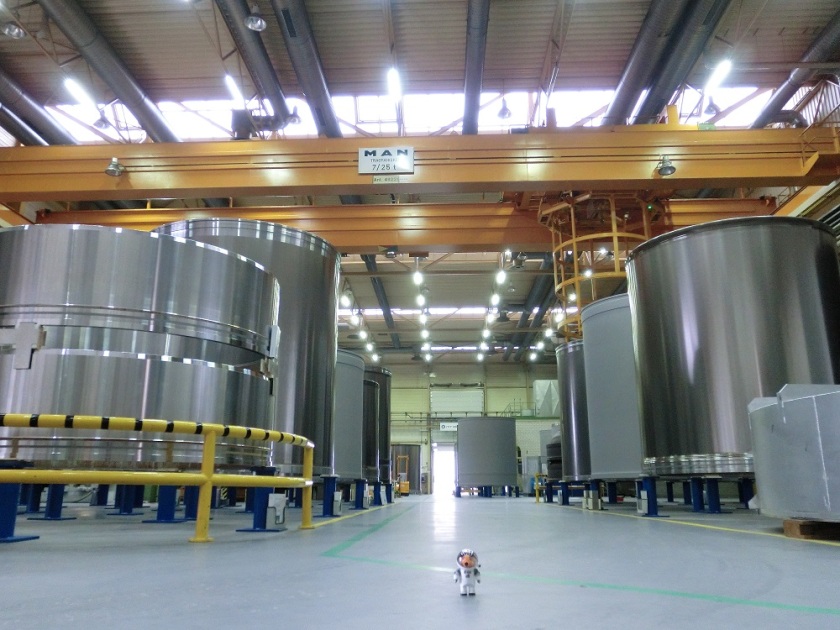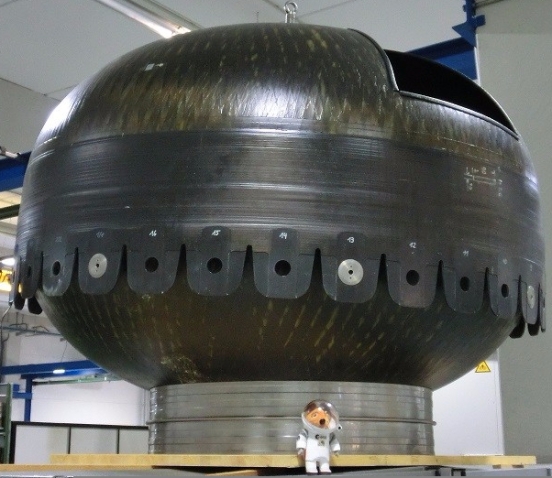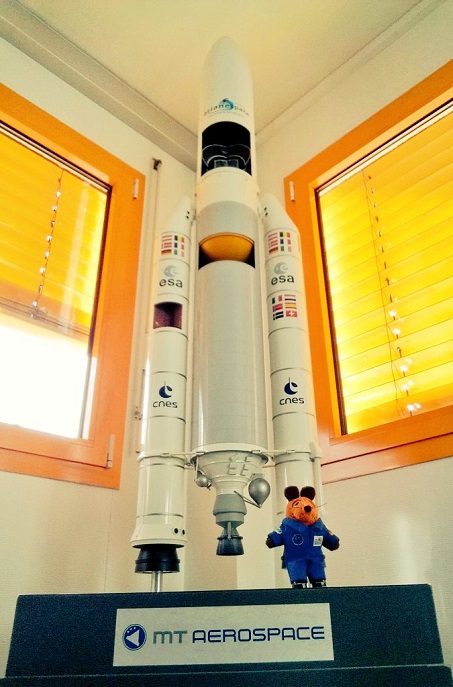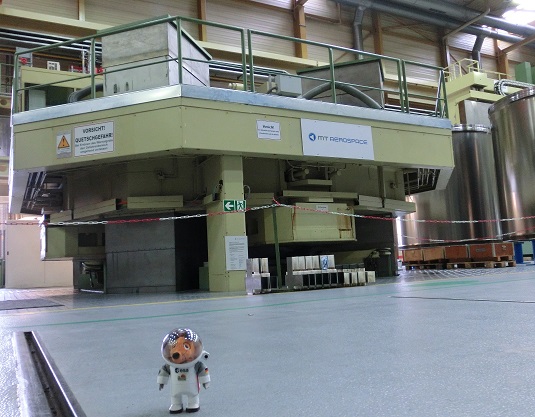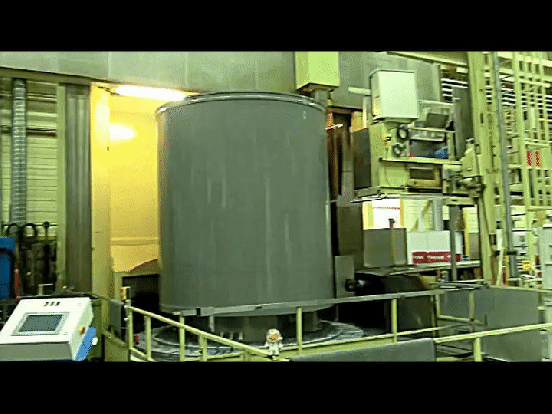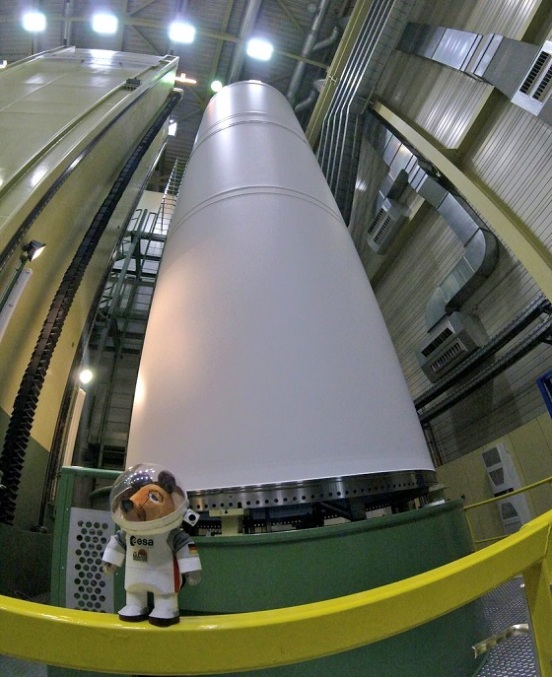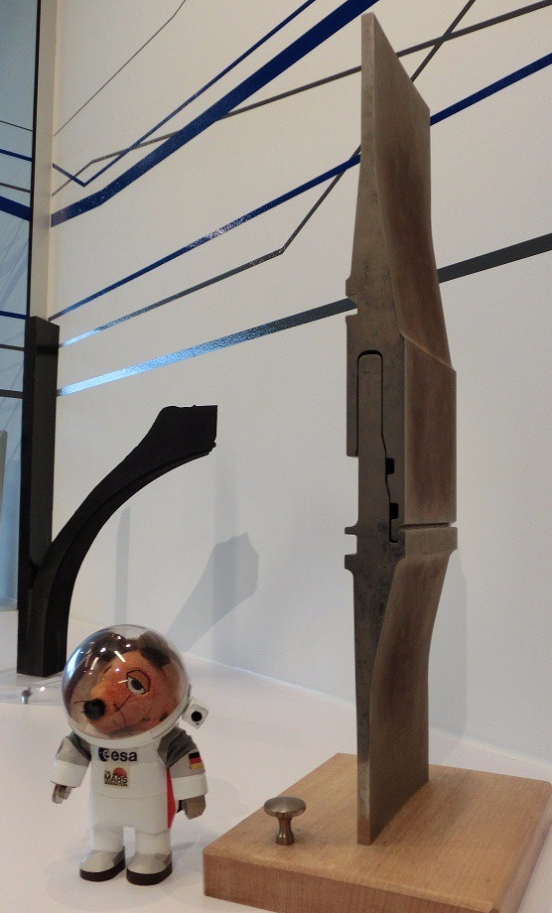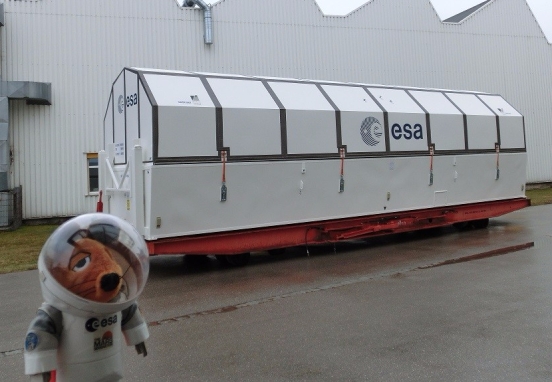Link to German version/Deutschsprachige Version
Some time ago I had the great honour to take a look behind the scenes of one of the top aerospace companies in Europe: MT Aerospace in Augsburg, Germany. Until 2005 this company was belonging to the MAN group. Then the ownership changed to the OHB group and the new name MT Aerospace was introduced.
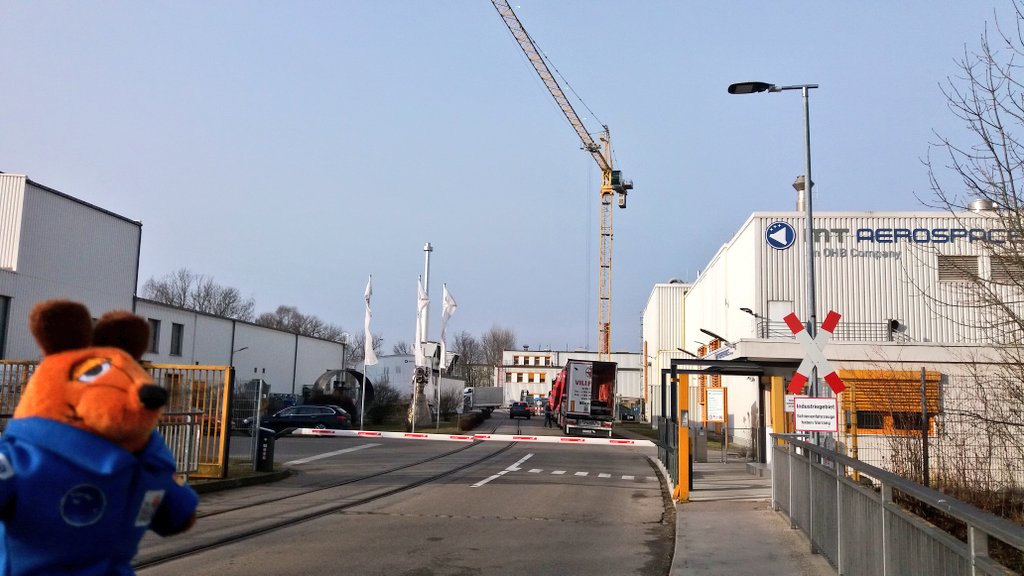
In front of the company MT Aerospace in Augsburg, Germany. You can see that some construction activities are going on. A new facility for producing parts for the new ESA launcher Ariane 6 is being built.
MT Aerospace is producing important components for the European and the international aerospace community. One of their products are fuel tanks for satellite (see an example in the image below). Their main products are key components for the ESA launcher Ariane 5. In the near future MT Aerospace will begin to built several important components for the new ESA launcher Ariane 6. A new production facility is under construction to enabling to Start to build Ariane 6 components before the end of this year. This is necesssary as the launch date for the very first Ariane 6 is fixed for July 2020!
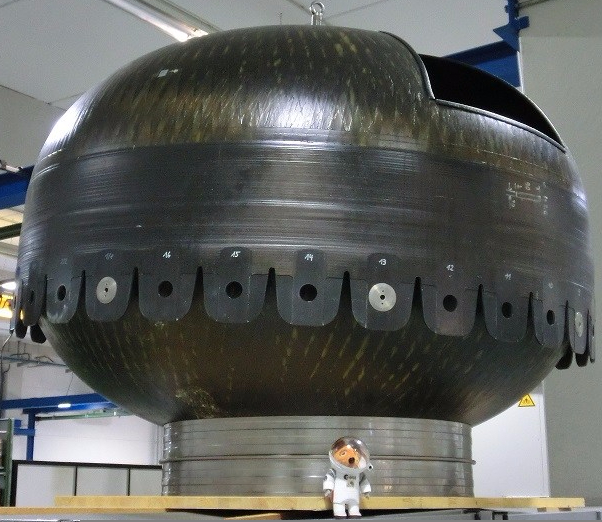
1:1 test fuel tank of the ESA satellite Alphabus.
First let us go back to the current production activities at MT Aerospace – the production of components for the Ariane 5 launcher. The Ariane 5 launcher is the current heavy lift launcher of ESA and Arianespace and is well known for its reliability. The last 80 consecutive successful launches are a fabulous record! About 50 percent of all commercial communication satellites were launched with this launcher during recent years. Additionally, Ariane 5 has lifted heavy ESA satellites like the 5 ATV cargo vessels going to the ISS. A relatively new task is to launch the European Galileo navigation satellites. Ariane 5 allows to launch four Galileo sats at once. Another launch with four Galileos is planned for the end of this year.

An Ariane 5 model with some cuts revealing the components that are built by MT Aerospace.
Which components for the Ariane 5 launcher are produced at the factory in Augsburg? There are the steel segments for the solid rocket boosters. The boosters are about 30 m tall and cannot be produced in a single piece. Therefore a booster is compromised to consist of three different units. We had the honour to tour the entire production facility for the booster units and were even allowed to take some pictures. So please join me for a tour through this air-conditioned facility!
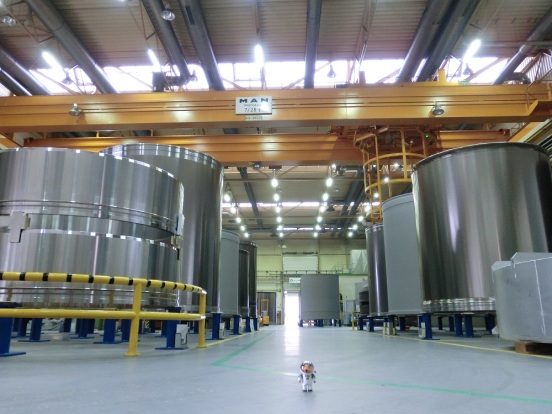
Several booster segments in different states inside the booster segment production facility of MT Aerospace.
The booster segments are made from steel tubes with a wall thickness of several centimeters. After some prepatory work these rings are being pressed into the correct shape for a booster segment. The wall thickness is reduced to about 8 mm. The diameter of the segments is finally 3.05 meters. For reaching this a very big machine is necessary: a counter roller flow former. This machine exerts forces of several hundred tons from both sides of the steel wall! That is enormous!
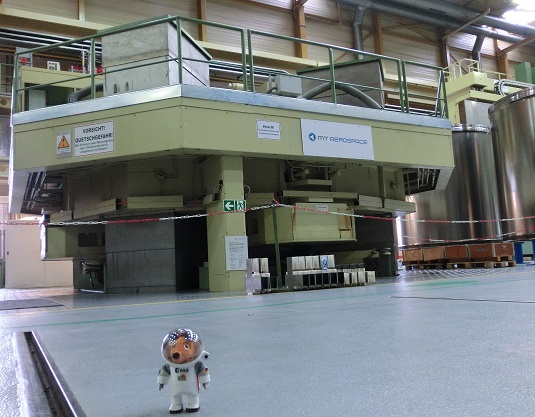
The gigantic counter roller flow former is pressing the steel rings into the perfect shape. With a force of several hundred tons the wall thickness of a few centimeters of the segments is reduced to 8 mm.
The entire cylindrical part of an Ariane 5 booster case consists of 7 segments. 2 x 3 segments are welded together here at the factory in Augsburg. They form the lower and the central part of the booster case. The upper part is a single segment. The lower and the upper part have end domes with openings for the noozle or the igniter.
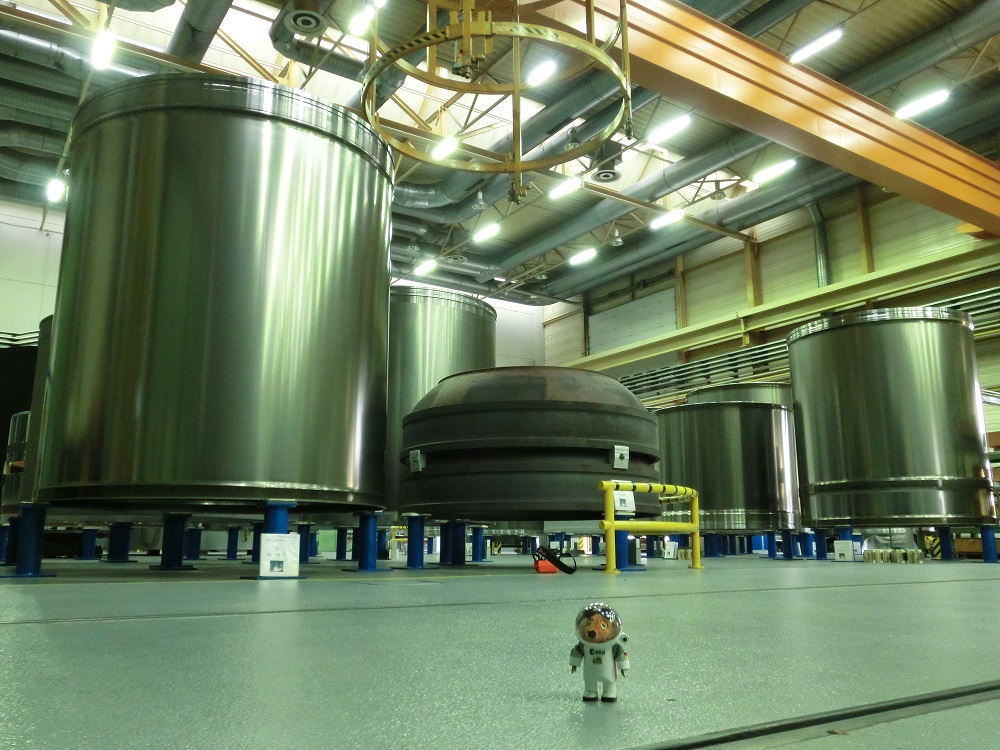
Several finished booster segments and two end domes for the lower booster case.
The edges of the booster segments need special treatment before they are ready for welding. A giant turning lathe is been used for this. The entire booster segment is rotating while the processing is going on. I was allowed to take a short video of this process:
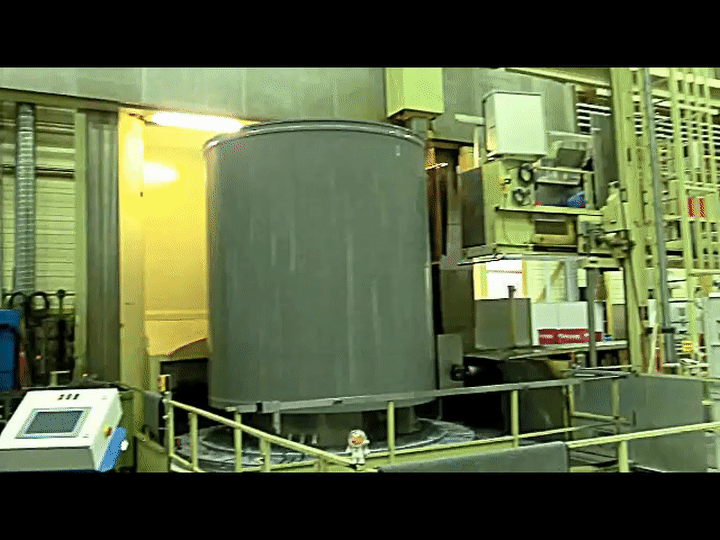
The next step is to weld three booster segments together. A special welding method is been used here: electron beam welding. Two three-piece units and a single-piece unit form the entire cylindrical part of the case for an Ariane 5 booster.
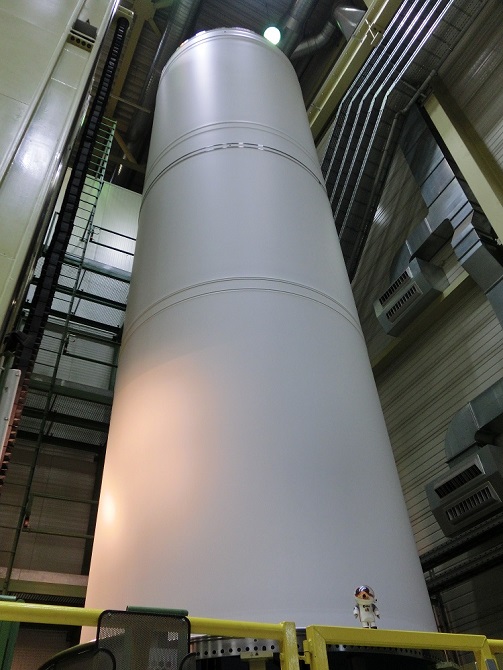
A finished lower booster case unit consisting of three pieces welded together. At the lower you can see a metallic ring with several drilling holes. Here the central booster case unit will be connected with a few hundred bolts.
The surface of the booster segments is been coated with several layers of anti-corrosion material. Now the booster segments have the typical white look that you see during the launch campaigns in Kourou. The European spaceport Kourou is also the location were the three case units forming a booster are being connected after filling them with the solid propellant. This connection is done with a special flange at the egdes of the booster case units. This flange is been produced here in the Augsburg factory. How does such a flange connection work? You can see an example for such a connection in the image below.
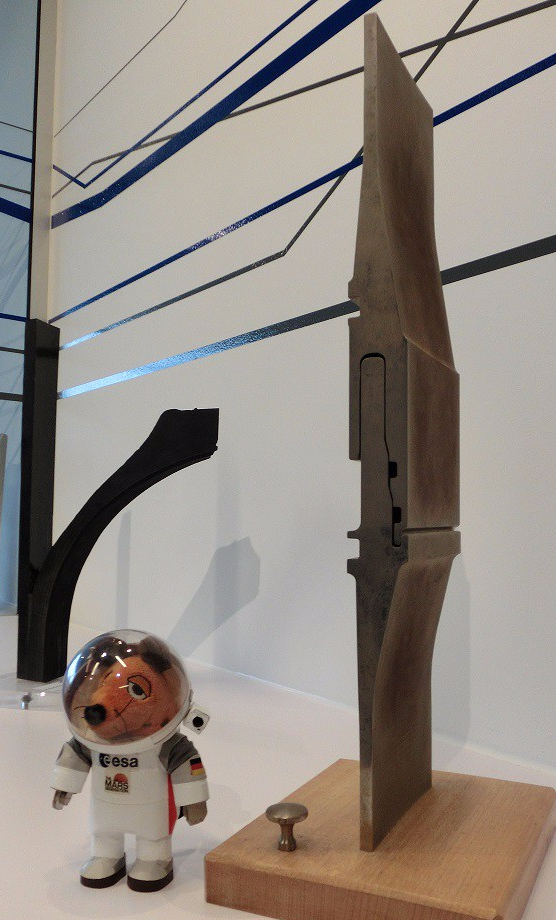
Cut through a flange connection between case units of an Ariane 5 booster. Holes for the connecting bolts are missing. You can recognize two spaces for some special sealing rings. Some of you may know that the Solid Rocket Boosters of the Space Shuttle had similar sealing rings called „O rings“.
The flange connection is been fixed with a few hundred bolts. Holes for these bolts are being drilled here in the Augsburg factory. This is a very sensitive process. After drilling each single hole the exact location of the hole is determined. The measured location influences where the next hole will be drilled. This is to make sure that the case units can be connected with the bolts without using any heavy force.
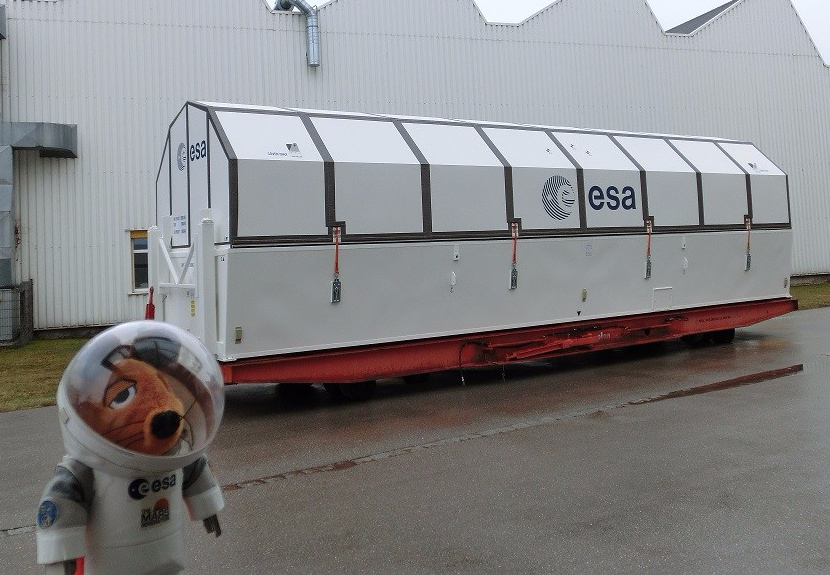
Transportation container for a long Ariane 5 booster case unit. (Published with permission by M. Trovatello/ESA HQ. Thank you, Marco !)
Finally, the finished three different booster case units are being transported on the road to Italy via a heavy goods transport. In Italy internal insulation material and other components are added before the booster units are shipped to Kourou.
With this I finish the first part of my report. Two additional parts will be published soon.
Yours truly,
Mausonaut
Part II: Tank domes and other things
Part III: Ariane 6 and MT Aerospace


